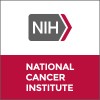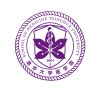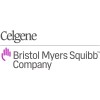
Use of T-allo10 in Hematopoietic Stem Cell Transplantation (HSCT) for Blood Disorders
AML - Acute Myeloid LeukemiaMDS (Myelodysplastic Syndrome)4 moreA significant number of patients with hematologic malignancies need a hematopoietic stem cell transplant (HSCT) to be cured. Only about 50% of these patients have a fully matched donor, the remaining patients will require an HSCT from a mismatched related or unrelated donor. Almost 60% of these mismatched donor HSCTs will result in graft-versus-host disease (GvHD), which can cause significant morbidity and increased non-relapse mortality. GvHD is caused by the donor effector T cells present in the HSC graft that recognize and react against the mismatched patient's tissues. Researchers and physicians at Lucile Packard Children's Hospital, Stanford are working to prevent GvHD after HSCT with a new clinical trial. The objective of this clinical program is to develop a cell therapy to prevent GvHD and induce graft tolerance in patients receiving mismatched unmanipulated donor HSCT. The cell therapy consists of a cell preparation from the same donor of the HSCT (T-allo10) containing T regulatory type 1 (Tr1) cells able to suppress allogenic (host-specific) responses, thus decreasing the incidence of GvHD. This is the first trial of its kind in pediatric patients and is only available at Lucile Packard Children's Hospital, Stanford. The purpose of this phase 1 study is to determine the safety and tolerability of a cell therapy, T-allo10, to prevent GvHD in patients receiving mismatched related or mismatched unrelated unmanipulated donor HSCT for hematologic malignancies.

Durvalumab in Different Combinations With Pralatrexate, Romidepsin and Oral 5-Azacitidine for Lymphoma...
LymphomaT-CellThis is an open-label, Phase 1/2a, dose-finding study with an initial phase 1 portion, articulated in four separate treatment arms, followed by a dedicated phase 2 for qualifying treatment Arm(s). The primary objective of the Phase 1 portion is to determine the maximum tolerated dose (MTD) and dose limiting toxicity (DLT) of the combinations of: Durvalumab, oral 5-azacitidine, and romidepsin (Arm A); durvalumab, pralatrexate, and romidepsin (Arm B); durvalumab and romidepsin (Arm C); or durvalumab and oral 5-azacitidine (Arm D), in patients with peripheral T-cell lymphoma (PTCL). The safety and toxicity profile of these combinations will be evaluated throughout the entire study. If one or more of the combinations in Arms A, B, C, or D are found to be feasible and an MTD is established, the phase 2 portion of the study will be initiated for the combination(s) with the strongest efficacy signal provided acceptable toxicity.

Rituximab With or Without Stem Cell Transplant in Treating Patients With Minimal Residual Disease-Negative...
CD20 PositiveMantle Cell LymphomaThis randomized phase III trial studies rituximab after stem cell transplant and to see how well it works compared with rituximab alone in treating patients with in minimal residual disease-negative mantle cell lymphoma in first complete remission. Monoclonal antibodies, such as rituximab, may interfere with the ability of cancer cells to grow and spread. Giving chemotherapy before a stem cell transplant helps kill any cancer cells that are in the body and helps make room in the patient's bone marrow for new blood-forming cells (stem cells) to grow. After treatment, stem cells are collected from the patient's blood and stored. More chemotherapy is then given to prepare the bone marrow for the stem cell transplant. The stem cells are then returned to the patient to replace the blood-forming cells that were destroyed by the chemotherapy. Giving rituximab with or without stem cell transplant may work better in treating patients with mantle cell lymphoma.

Venetoclax, Ibrutinib, Prednisone, Obinutuzumab, and Revlimid (ViPOR) in Relapsed/Refractory B-cell...
LymphomaNon-Hodgkin Lymphoma2 moreBackground: B-cell lymphoma is a cancer of white blood cells found in the lymph nodes. It affects the system that fights infections and disease. Researchers want to learn how certain drugs work together to treat B-cell lymphomas. The drugs are venetoclax, ibrutinib, prednisone, obinutuzumab, and lenalidomide (ViPOR). Objective: To study the safety of ViPOR for people with B-cell lymphoma. Eligibility: People ages 18 and older with B-cell lymphoma whose cancer has returned or not improved after treatment Design: Participants will be screened with: Medical history Physical exam Blood, urine, and heart tests Tissue sample from previous procedure Imaging scans Registration for counseling on the risks of lenalidomide. They must get counseling at least every 28 days. Participants will have a bone marrow aspiration before treatment. Participants may have tumor samples taken. Participants will get ViPOR in 21-day cycles. For up to 6 cycles: Participants will get one drug by IV on days 1 and 2. Participants will take the other four drugs by mouth on most days. After their first dose of venetoclax, they will stay in the clinic for at least 8 hours and return the next day for monitoring. They may be admitted for more drugs or monitoring. Participants will keep a drug diary. Participants will have a physical exam and blood and urine tests at least once per cycle. They will have scans 4 times over 6 cycles. Participants will have a visit about 1 month after their last dose of study drug. They will then have visits every few months for 3 years, and once a year for years 4 and 5. Visits include a physical exam, blood tests, and scans.

Larotrectinib in Treating Patients With Relapsed or Refractory Advanced Solid Tumors, Non-Hodgkin...
Advanced Malignant Solid NeoplasmRecurrent Ependymoma31 moreThis phase II Pediatric MATCH trial studies how well larotrectinib works in treating patients with solid tumors, non-Hodgkin lymphoma, or histiocytic disorders with NTRK fusions that may have spread from where it first started to nearby tissue, lymph nodes, or distant parts of the body (advanced) and have come back (relapased) or does not respond to treatment (refractory). Larotrectinib may stop the growth of cancer cells by blocking some of the enzymes needed for cell growth.

SHR-1210 Alone or in Combination With Decitabine in Relapsed or Refractory Hodgkin Lymphoma
Hodgkin LymphomaThis is a two-stage, Phase II clinical trial for patients with relapsed or refractory Hodgkin Lymphoma. The purpose of stage I is to evaluate whether treatment with the study drug decitabine in combination with SHR-1210 is safe and more effective than treatment with SHR-1210 alone; and reverse the resistance of anti-PD-1 antibody in patients with HL who had previously treated with anti-PD-1 monotherapy. If it is deemed that the combination therapy is more efficacious than SHR-1210 monotherapy (The CR rate of the combination group is at least 30% higher compared to monotherapy group with a minimal follow-up of 6 months in predicting 60 subjects naïve to anti-PD-1 antibody who are randomly assigned (2:1) to the above two groups), the stage II study will be revised to a multicohort, decitabine-plus-SHR1210 single-arm clinical trial. The primary objective of stage II study is to evaluate the long-term response duration with decitabine-plus-SHR-1210 in relapsed or refractory Hodgkin Lymphoma.

Study of Iopofosine I 131 (CLR 131) in Select B-Cell Malignancies (CLOVER-1) and Pivotal Expansion...
Waldenstrom MacroglobulinemiaMultiple Myeloma7 morePart A of this study evaluates iopofosine I 131 (CLR 131) in patients with select B-cell malignancies (multiple myeloma( MM), indolent chronic lymphocytic leukemia (CLL)/small lymphocytic lymphoma (SLL), lymphoplasmacytic lymphoma (LPL)/Waldenstrom Macroglobulinemia (WM), marginal zone lymphoma (MZL), mantle cell lymphoma (MCL), diffuse large B-cell lymphoma (DLBCL), and central nervous system lymphoma (CNSL) who have been previously treated with standard therapy for their underlying malignancy. Part B (CLOVER-WaM) is a pivotal efficacy study evaluating IV administration of iopofosine I 131 in patients with WM that have received at least two prior lines of therapy.

Study to Evaluate the Safety and Efficacy of a Combination of Favezelimab (MK-4280) and Pembrolizumab...
Hodgkin DiseaseLymphoma3 moreThis study will evaluate the safety and efficacy of favezelimab (MK-4280) in combination with pembrolizumab (MK-3475) using a non-randomized study design in participants with the following hematological malignancies: classical Hodgkin lymphoma (cHL) diffuse large B-cell lymphoma (DLBCL) indolent non-Hodgkin lymphoma (iNHL) This study will also evaluate the safety and efficacy of pembrolizumab or favezelimab administered as monotherapy in participants with cHL using a 1:1 randomized study design. The study will have 2 phases: a safety lead-in and an efficacy expansion phase. The recommended Phase 2 dose (RP2D) will be determined in the safety lead-in phase by evaluating dose-limiting toxicities. There is no primary hypothesis for this study.

PPI Versus Histamine Antagnists as Adjuvant to Chemotherapy
LymphomaThe study is a Comparative Clinical and Biochemical Study Evaluating the effect of Proton Pump I nhibitors versus histamine 2 Receptor antagonists as an adjuvant with chemotherapy in patients with Non-hodgkin Lymphoma.

A Study to Evaluate the Safety and Efficacy of JCAR017 in Pediatric Subjects With Relapsed/Refractory...
Precursor Cell Lymphoblastic Leukemia-LymphomaLymphoma1 moreThis is a Phase 1/2, open-label, single arm, multicohort study to evaluate the safety and efficacy of JCAR017 in pediatric subjects aged ≤ 25 years with CD19+ r/r B-ALL and B-NHL. Phase 1 will identify a recommended Phase 2 dose (RP2D). Phase 2 will evaluate the efficacy of JCAR017 RP2D in the following three disease cohorts: Cohort 1 (r/r B-ALL), Cohort 2 (MRD+ B-ALL) and Cohort 3 (r/r B-NHL, [DLBCL, BL, or PMBCL]). A Simon's Optimal two-stage study design will be applied to Cohort 1 and 2 in Phase 2.
